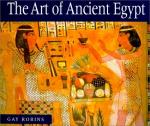|
This section contains 1,081 words (approx. 4 pages at 300 words per page) |

|
Visual Art and Architecture. After an initial period of experimentation the conventions of Egyptian visual art were firmly established by the end of Dynasty 4 (circa 2500 B.C.E.). In fact, the most basic conceptual framework for Egyptian art was already established in the time of Narmer (circa 3000 B.C.E.). In two-dimensional relief sculpture and painting, the Egyptians created a distinctive style. They used a combination of perspectives, hieratic scale, baselines, and registers to organize composition, hieroglyphic labels, and fantastic figures combining animal and human bodies in one creature. The combination of perspectives meant that the human body was depicted with the head and legs in profile, while the upper torso and eye were presented frontally. Hieratic scale allowed the artist to represent the most important figure, usually the king or a god, on a larger scale than other figures. The size of a figure was based on...
|
This section contains 1,081 words (approx. 4 pages at 300 words per page) |

|



